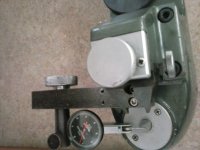T
TRA
Guest
I didn't say they worked the same way, I said it was the best analogy I could think of (that is, relating something that is clearly not understood (why that middle ground isn't really usable) to something that is (wall clocks). I stand by what I said. The dial _is_ movable, but you're only going to move it to a point at which the needle sits at rest.
GsT
What you are describing is more like how a digital works. At a certain point a digital jumps to the next number. Most .0000 digital indicators or measuring devices are in .0005 intervals. Analog indicators are direct drive so to speak, and the needle movement is directly related to the movement of the stylus.
The analog clock that has tics, works on a geneva drive process.


